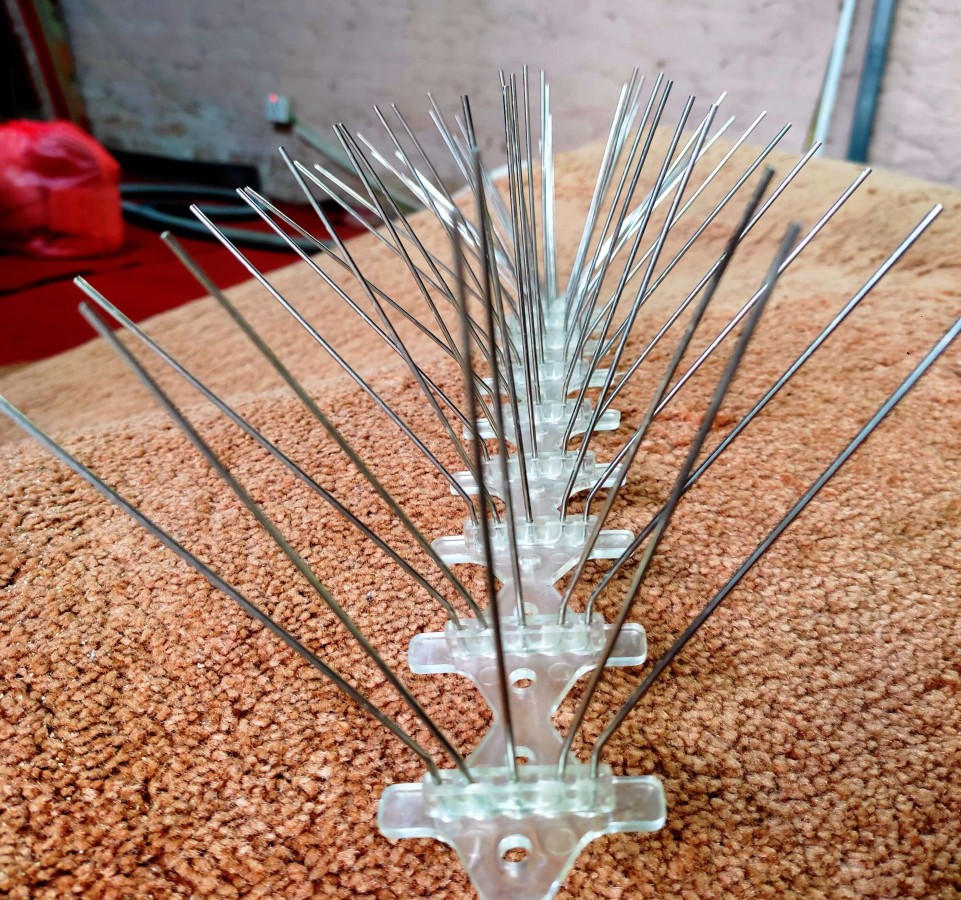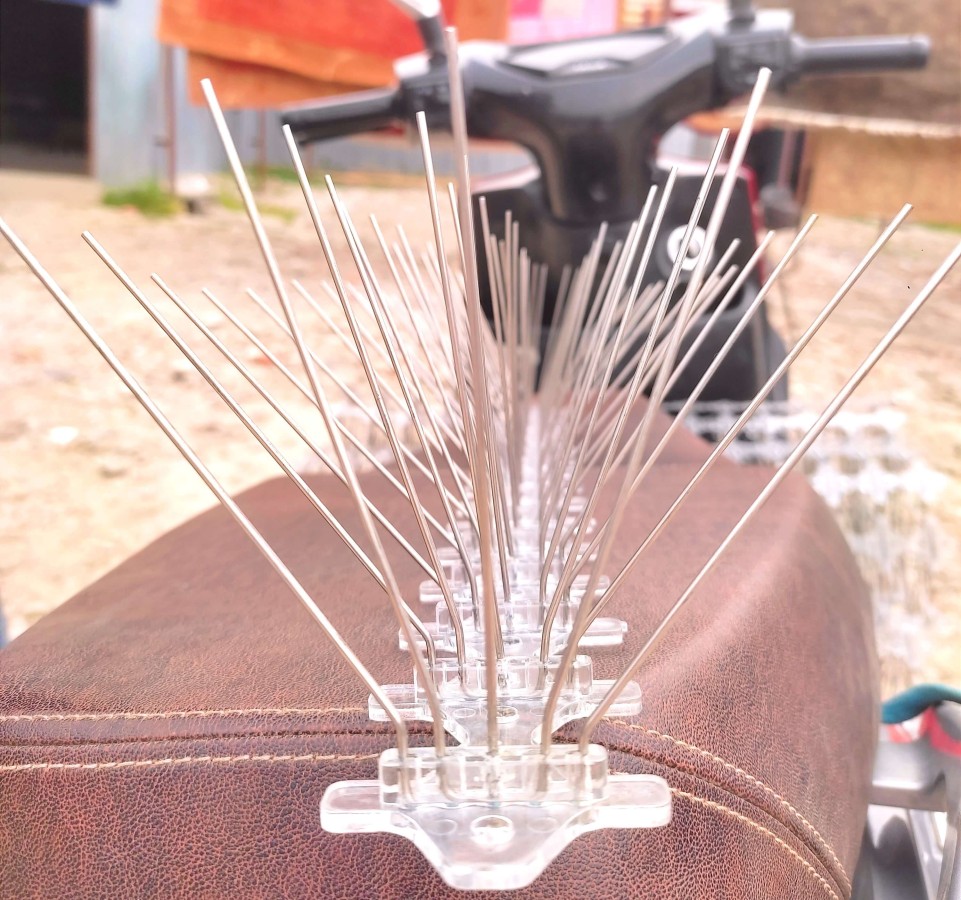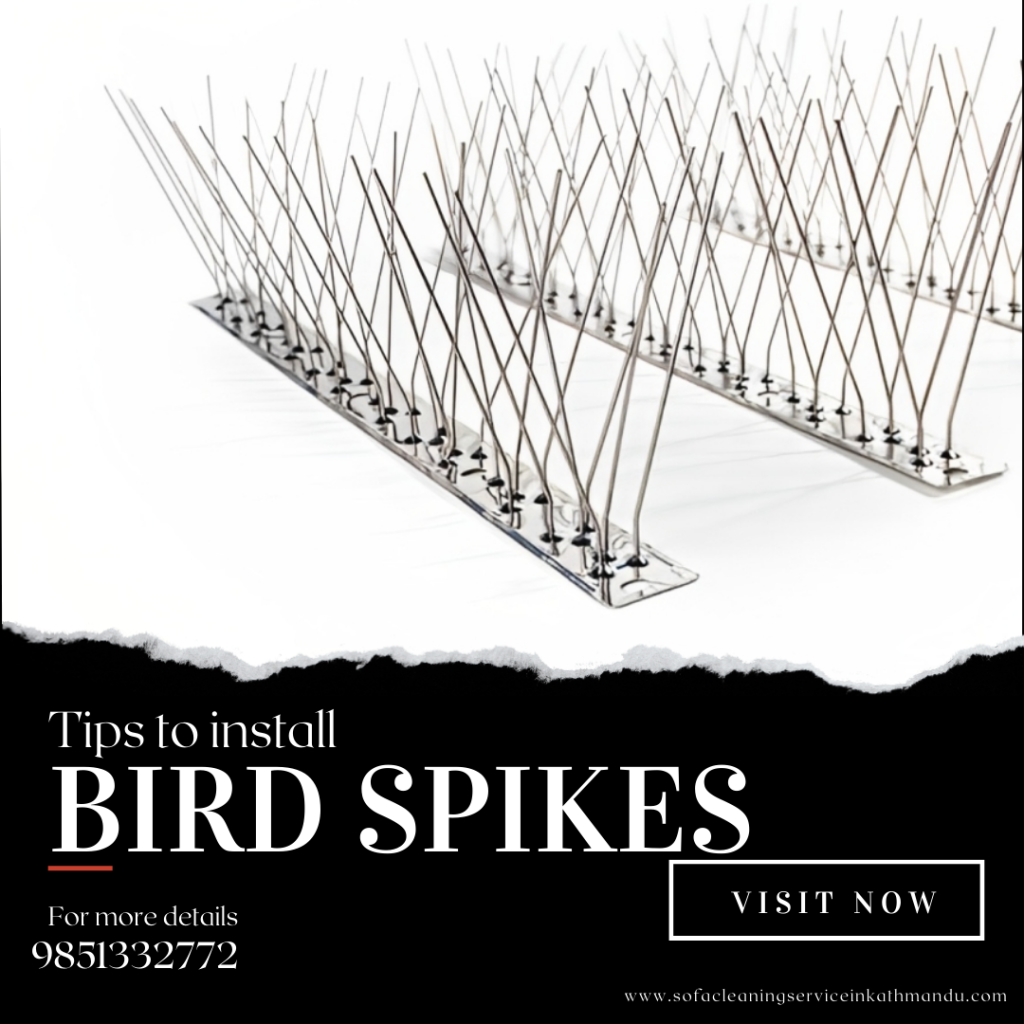Introduction

Bird spikes are a practical way to keep birds from perching or establishing nests on structures. Birds cannot perch or land on them because they are made of strips of plastic or metal with sharp edges. Bird spike must be installed correctly in order to be effective and durable. This essay will go over how to install bird spikes in Kathmandu and whether you should do it yourself or contact an expert. We will also offer advice on how to maintain and replace bird spike.
Steps to install bird spikes
Determine where bird spikes are required in the first step.
- Find the locations where birds are nesting or roosting.
- Identify the area that has to be covered in length and width.
Cleaning the area in Step 2 will guarantee proper adherence
- Use a broom or brush to sweep up any dirt or debris from the area.
- To get rid of any stubborn stains or filth, use cleaning supplies.
- Before moving on to the following step, let the area entirely dry.
Calculate and indicate the area where the bird spikes will go.
- Measure the length and width of the area that needs to be covered
- Mark the area with chalk or a marker to ensure proper placement of bird spike
Apply glue to the bird spike strips’ bases.
- A generous amount of adhesive should be applied to the bird spike strips’ bases.
- Make sure the strip’s whole base is covered with glue.
Fix the bird spike strips to the designated locations.
- Put the bird spike strips where they have been marked.
- To ensure appropriate adherence, gently press.
- Continue until the area is completely coated.
Look for any openings or slack spots.
- Check the area for any openings or loose patches.
- If more adhesive is required, use it, or move the strips.
Carry out the previous steps once more to cover the entire area.
- Continue installing the bird spike until they are all over the region.
To maintain the efficiency and lifespan of bird spikes, it is crucial to adhere to the manufacturer’s recommendations for correct installation.
Do-it-yourself (DIY) installation
Here are some things to think about before installing bird spike yourself:
Pros:
- less expensive than employing pros
- You are in charge of the installation procedure.
- The installation can be finished at your own leisure.
Cons:
- The bird spike may become useless if they are installed incorrectly.
- You might not have the required equipment or expertise for a quality installation.
- If the installation is not done correctly, the warranty could be void.
Tools and materials needed:
- Bird spike strips
- Adhesive
- Measuring tape
- Chalk or marker
- Cleaning solution
- Broom or brush
- Safety equipment (gloves, goggles)
Tips for successful DIY installation:
- Carefully read and adhere to the manufacturer’s instructions.
- Before installation, properly clean the area. Use a level to make sure the bird spikes are installed equally.
- Put on protective gear to shield yourself from sticky and sharp edges.
- Throughout the installation process, take your time and be patient.
Overall, if you have the right equipment and experience, DIY installation can be a budget-friendly choice. However, it might be best to think about hiring professionals for the job if you are unsure about the installation procedure.
Hiring professionals

Hiring professionals to install bird spikes can have many advantages, including:
Advantages:
- Professional installation guarantees the successful attachment of bird spikes.
- Professionals are equipped with the skills needed for effective installation.
- Typically, professional installation comes with a warranty, giving you peace of mind.
- Additionally, experts can offer guidance on additional bird control methods.
When to consider hiring a professional:
- Installing bird spikes in locations that are large or complicated
- If you lack the required equipment or installation expertise
- If you want to make sure the bird spikes are fitted correctly and work,
Finding and choosing the right professional:
- Look up bird control businesses in Kathmandu.
- Check out the ratings and read the reviews.
- Request quotes from several businesses and compare prices.
- Pick a business that has a history of reliable installation work.
It is crucial to remember that professional installation can save you time, money, and give a better effective solution even though it may be more expensive than DIY installation.
Maintenance and replacement
Bird spikes must be maintained and replaced often to maintain their effectiveness and durability. Here are some recommendations for caring for and changing bird spikes:
Maintenance:
- Regularly check the bird spikes for any signs of wear or damage.
- Clear the spikes of any trash or bird droppings that may have accumulated there.
- To get rid of dirt and grime, wash the spikes with some mild soap and water.
- Make sure the adhesive is still holding the spikes in place by checking it.
- If necessary, make repairs or replace damaged spikes.
Replacement:
- Several years of use may necessitate the replacement of bird spikes.
- Spikes should be changed if they are broken or worn out beyond repair.
- Replace spikes that have dulled or lost their sharpness.
- To properly replace bird spikes, adhere to the manufacturer’s recommendations.
The efficient use of bird spike in keeping birds from roosting or nesting on buildings and structures can be ensured with careful maintenance and replacement of the spikes. Birds may re-enter the area and harm the building or structure if upkeep is neglected or worn-out bird spikes are not replaced.
Conclusion
In conclusion, bird spike can be an efficient way to stop birds from perching or constructing nests on structures in Kathmandu. For optimal efficiency, it is crucial to follow the manufacturer’s instructions and ensure appropriate installation whether you decide to install bird spike yourself or employ professionals. Bird spikes may be maintained properly and replaced when necessary to maintain their effectiveness over time. You can guard your property from bird damage and maintain its finest appearance by taking the appropriate procedures to install and maintain bird spike.

